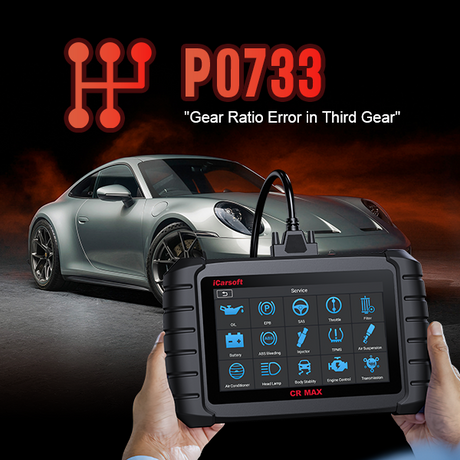Table of Contents
- 1. What Is Error Code P1710?
- 2. Common Triggers for Fault Code
- 3. Signs of Transmission Error
- 4. Diagnosing with CR MAX & Eagle
- 5. Fixing Transmission Sensor Issues
- 6. Benefits of CR MAX & Eagle
- 7. Preventing Transmission Faults
- 8. When to Seek Professional Help
- 9. Can Low Fluid Trigger Errors?
- 10. Signs of Sensor Failure
- 11. ECM’s Role in Faults
- 12. Value of Routine Diagnostics
- 13. Testing the Speed Sensor
- 14. Key Takeaways on Diagnostics
The transmission sensor circuit malfunction, known as fault code P1710, signals an issue with the transmission speed sensor or its wiring. This sensor tracks the transmission’s input or output speed, ensuring smooth gear shifts and optimal drivetrain performance.
The CR MAX & CR Eagle diagnostic tools offer a reliable way to pinpoint and fix this issue. This guide explores the causes, symptoms, and solutions for the error, helping you keep your vehicle running smoothly.

1. What Is Error Code P1710?
This fault code points to a problem in the transmission speed sensor circuit, which can disrupt gear changes, lower fuel efficiency, and affect how your vehicle drives.
2. Common Triggers for Fault Code
- Malfunctioning transmission speed sensor
- Worn or corroded wiring
- Broken or loose circuit connectors
- Contaminated transmission fluid
- Defective Engine Control Module (ECM)

3. Signs of Transmission Error
- Check Engine Light stays on
- Gear shifts feel jerky or delayed
- Vehicle enters limp mode
- Fuel economy drops
- Transmission makes odd noises

4. Diagnosing with CR MAX & Eagle
The CR MAX & CR Eagle tools make diagnosing transmission issues straightforward and efficient.
Steps to Diagnose:
- Plug the CR MAX or CR Eagle into your vehicle’s OBD-II port.
- Retrieve and review fault codes, noting any related to the transmission.
- Monitor live data to check the speed sensor’s performance.
- Inspect the sensor and wiring for visible wear or damage.
- Verify the transmission fluid’s condition and level.
5. Fixing Transmission Sensor Issues
- Replace a defective speed sensor.
- Repair or replace damaged wiring or connectors.
- Flush and replace dirty transmission fluid.
- Update or replace the ECM if needed.

6. Benefits of CR MAX & Eagle
The CR MAX & CR Eagle tools excel in diagnosing issues like transmission faults, offering:
- Accurate code reading and clearing
- Real-time data for precise troubleshooting
- Support for many vehicle makes and models

7. Preventing Transmission Faults
To avoid sensor-related issues, try these steps:
- Regularly clean and check the speed sensor.
- Maintain clean transmission fluid at the right level.
- Inspect wiring during routine maintenance.
- Use CR MAX or CR Eagle for periodic checks.

8. When to Seek Professional Help
If the issue persists after troubleshooting, consult a mechanic. Complex repairs, like ECM replacement or transmission work, often need expert skills and tools.
9. Can Low Fluid Trigger Errors?
Yes, low or dirty transmission fluid can impair the speed sensor, causing fault codes to appear.
10. Signs of Sensor Failure
Watch for these clues of a failing speed sensor:
- Speedometer shows incorrect readings
- Gears shift roughly
- Transmission produces grinding sounds
11. ECM’s Role in Faults
The ECM processes data from the speed sensor. If the signal is missing or erratic, it flags a fault to alert you.
12. Value of Routine Diagnostics
Regular checks with tools like CR MAX & CR Eagle catch issues early, saving you time and repair costs.
13. Testing the Speed Sensor
With CR MAX or CR Eagle, you can monitor the speed sensor’s live data to spot irregularities quickly.
14. Key Takeaways on Diagnostics
A transmission sensor issue can disrupt your vehicle’s performance, but CR MAX & CR Eagle tools help diagnose and fix it fast. Routine maintenance keeps your car in top shape.
 Learn More about iCarsoft Products
Learn More about iCarsoft Products












